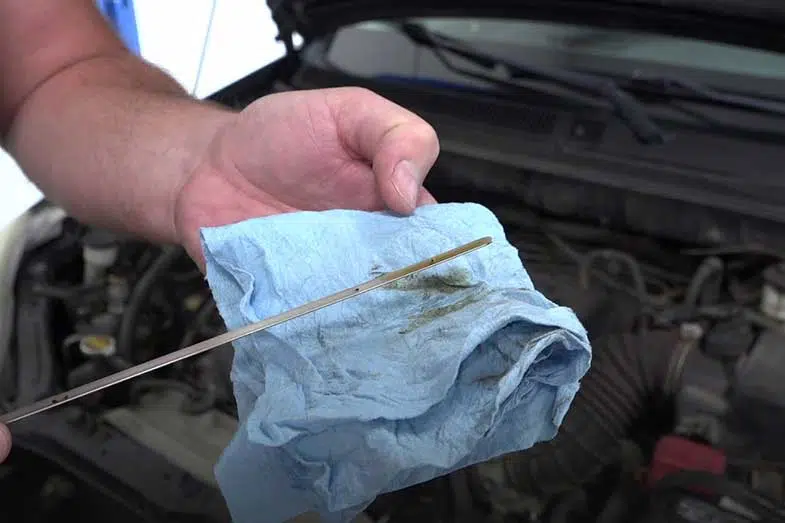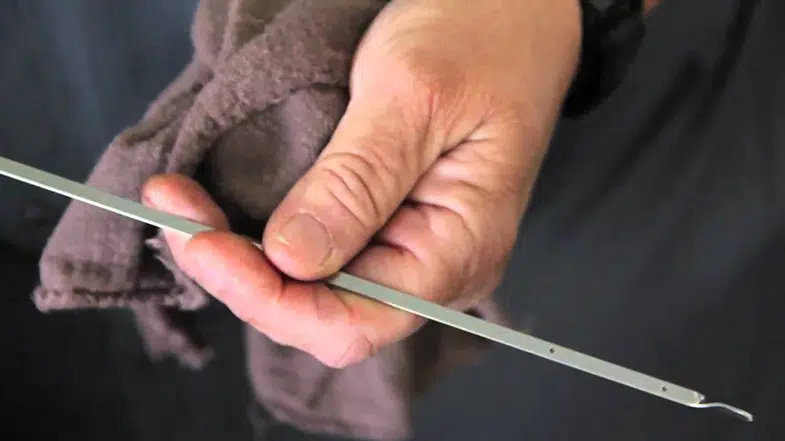In terms of motor oil, knowing what type you should use isn’t enough to ensure you’re providing your car engine the care it needs. You must also know when the best time to check your oil is to ensure you’re getting the correct level. It would give you an idea of when to top-up or refill it without compromising the engine’s health or damaging any of its parts.
So, when is the best time to check oil of your car engine? To know the right time to check the motor oil, you must refer to your vehicle’s engine temperature. As of writing, there is still really no one definite answer, but the temperature of the oil and the engine should be at least the same.
To better understand the perfect time to check your motor oil, let’s discuss whether you need to check it while the engine is still cold or hot. We’ll also determine if it’s okay to check the oil while your car is running, how to check it during the cold season, and answer common questions regarding oil checking. With all this information, you’re assured you’re maintaining your car properly.

Best Time to Check Oil in Cars?
An important thing to consider when learning about the best time to check the oil is the engine’s temperature. To determine the right time to check it in terms of engine temperature, we must answer some of the most important questions.
Should you do it while the engine is hot or wait until it gets cold? Can you check the oil level while the engine is still running?
Do You Check the Oil When The Engine Is Hot or Cold?
Experts recommend that you check the oil when the engine is cold or warm because of thermal expansion. Just a quick note; when we say cold, we mean standard or room temperature, not one-digit temp.
Scientifically speaking, when a liquid (oil) in a container gets exposed to a high temperature, it will start to expand, so it occupies more space than usual. As such, the level of the liquid (oil) increases, giving you a false increased reading.
On the contrary, when the engine is cold, the level normalizes because the oil is at or close to its optimal temperature. Warm temperature also doesn’t completely affect oil expansion, so there would be little to no variations in the actual oil level. Thus, in both situations, you avoid overfilling or underfilling.
With that in mind, the thermal expansion rate depends on the type of engine oil. Temperature changes greatly affect synthetics, while regular ones don’t get affected that much.
Another reason why the perfect time to check the oil is when the engine is cold is for safety. When both the engine and oil are cold, there is no chance of skin scalding or burning when you accidentally touch any of the two. Keep in mind that newer car models with electronic-type oil level controllers only measure oils when the engine is warm.
Lastly, checking the oil level while the engine is cold or warm is best because, at this point, the oil already reached the pan. Also, neither the engine nor the oil is colder or hotter than the other.
Can U Check Oil While Car Is Running?

It’s been established earlier that you can check the oil while the engine is still warm. So, technically, you can’t check the oil while the car engine is running because it’s hot. But what if you need to check the oil after driving? How do you know if your vehicle’s engine is warm rather than hot?
Engine oils reach a temperature of up to 120 degrees C or 250F, depending on how long the car has been turned on. Experts say that in about 10 or 15 minutes after you switched off the engine, it becomes ideally warm, making it the best time to check engine oils.
When Should I Check My Oil in the Winter?
As noted, temperature affects some oil types, so when the engine is too cold due to a too-low or freezing environment or outside temperature, it can contract. As such, if you check the oil level during the winter season or one-digit temperature conditions, you might get too low of a reading than how much is really left.
When you need to check your engine oil in these conditions, the best time to check oil in cars is when the engine is warm. Since it’s too cold outside, warming up your engine will help the oil and the engine achieve or get close to their optimal running temperatures.
During the winter or cold season, you need to turn your engine on, set it to idle to let it warm-up, and then turn it off. Let it sit for about 10 minutes. If you’ve driven your car for a few miles, though, turn the engine off and wait 15 minutes before checking the oil level.
FAQs About Motor Oil Level Checking

Now that we’ve established the perfect time to check your car’s oil in terms of engine and outside temperature, let’s answer other common and essential questions about checking motor oil. This way, you’ll have enough knowledge to prevent damaging your vehicle’s engine.
1. How Often Should I Check My Oil?
The frequency of checking your car engine’s oil is as important as the best time to check oil to avoid the risk of your engine running low on it or, worst, running out. Ideally, check once a month, but if you regularly drive long distances and have older car models, every two to three days would be best. That said, even if you do regular oil checks, you must do so before you drive long distances since your car will be running and consuming oil more than the regular days.
2. How Should the Car Be Parked When Checking Oil?
Before checking your engine’s oil, always make sure you parked your car on even or level ground. When on uneven ground, you’ll get inaccurate readings since the pan would be tilted in the direction the car is tilted.
3. What Should You Look at When Checking Oil?
When checking your car motor’s oil, you must look at some oil features to determine if you already need an oil change instead of just topping up the volume. This way, you also maximize your time and effort. With that in mind, here are the things to make a note of:
- Amount
Of course, the primary purpose of checking your engine oil is to see if it’s still enough to keep the parts lubricated. Ideally, it shouldn’t be above or below the required amount (discussed below).
- Color
Apart from the amount, you should also take some time to check the oil color. New oil usually has an amber or a golden yellow color and will eventually darken because of particulates and metal scrapings.
If the oil you see is chunky or black, you must change the oil even if the amount is still at the perfect level. Old and residue-rich oil might not damage your engine immediately but will lead to quick wear and tear. You will also see a significant difference in its performance, particularly horsepower and fuel efficiency.
- Texture
When you pull the dipstick out and before wiping it with the rag or cloth, it’s best to touch the oil clinging to it with your index finger. Then, with your index finger and thumb, slowly rub the oil to check how it feels.
If the oil feels gritty, it means your car needs an engine oil change. The gritty texture indicates it is too dirty or has a lot of impurities already, so it won’t be working 100%.
4. How Do You Check the Oil Properly?

Considering the facts about when is the best time to check your oil and the other factors, below are the recommended steps on how to check car engine oil:
- As mentioned, ensure you park your car at a level surface; even if it’s not 100% level, it’s okay as long as it’s not too inclined.
- The next thing is to check your car’s manual to know where the dipstick is located.
- If needed, warm up your car engine by turning it on and let it run for a while. Turn it off and wait for about 10 to 15 minutes.
- Open your car hood and find the oil dipstick found in your engine’s bay, usually on the left side. The dipstick is a long metal piece, usually with a yellow or orange circular handle.
- Pull the dipstick out, and by using a lint-free rag or paper towel, wipe the oil clinging to the dipstick.
- Place the dipstick back and pull it out again.
- Check the level of the oil by looking at the “wet” part of the dipstick. The level of oil should be between the minimum and maximum marks, not under or over, while also checking the other oil features discussed earlier.
- Next, touch the oil clinging to the dipstick to determine its texture; take note of the color, as well. You may also use an oil tester that can check impurities (Check Amazon for Price).
5. What Should You Do if Your Car Engine Oil Is Low?
Once you found out that your motor oil is about to get low or already low and doesn’t require change, the next thing you need to do is top it up with the right amount of good-quality oil. It’s best to do so while the engine is still warm since the remaining oil thins out or at its optimal working temperature. Most experts also recommend not to add oil up to the maximum level; leave a little room for possible inaccurate reading and thermal expansion.
A few days after topping up your oil and driving your car, you must re-check the level to detect any possible issues before the damage worsens. If it’s too low again, even if you only drove a few miles, it might indicate that there’s a leak or other engine issues. Thus, have your car checked by a professional.
Best Time to Check Oil: The Conclusion
The oil quality is a good indicator of whether your engine is in good or bad health, so you need to check it regularly. Not only do you need to know when is the best time to check oil, but also how to do it in different weather conditions and what you should check. That includes oil texture, color, and level.
The level is the most critical since a low volume won’t lubricate the moving parts, such as the pistons (Check Amazon for Price) and connecting rods, well, while a high level creates foamy oil that won’t also have efficient lubrication capabilities. When checking oil level, it’s recommended you do so before you start your engine or 10 to 15 minutes after turning the engine off.
Kris is an avid off-roader and outdoor enthusiast who loves to brave the elements and take on challenging terrain. He also enjoys sharing his passion and knowledge with others so that they, too, can appreciate the ride.
About Kris
